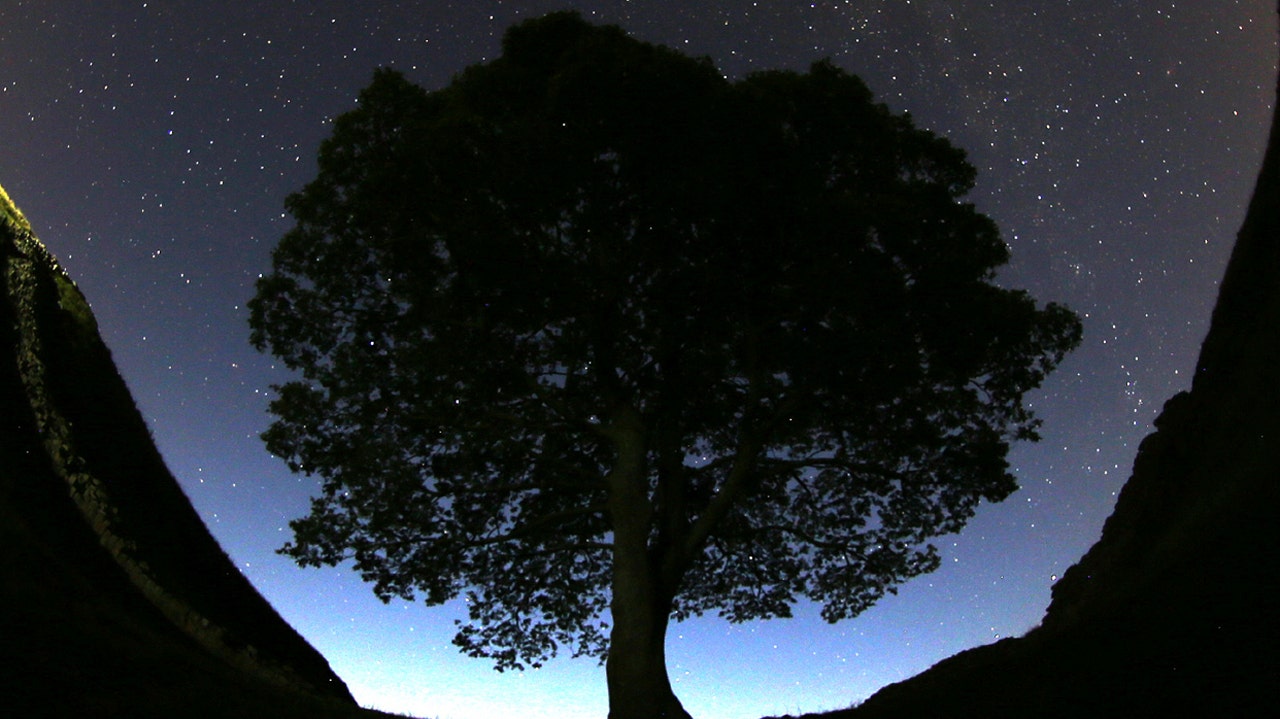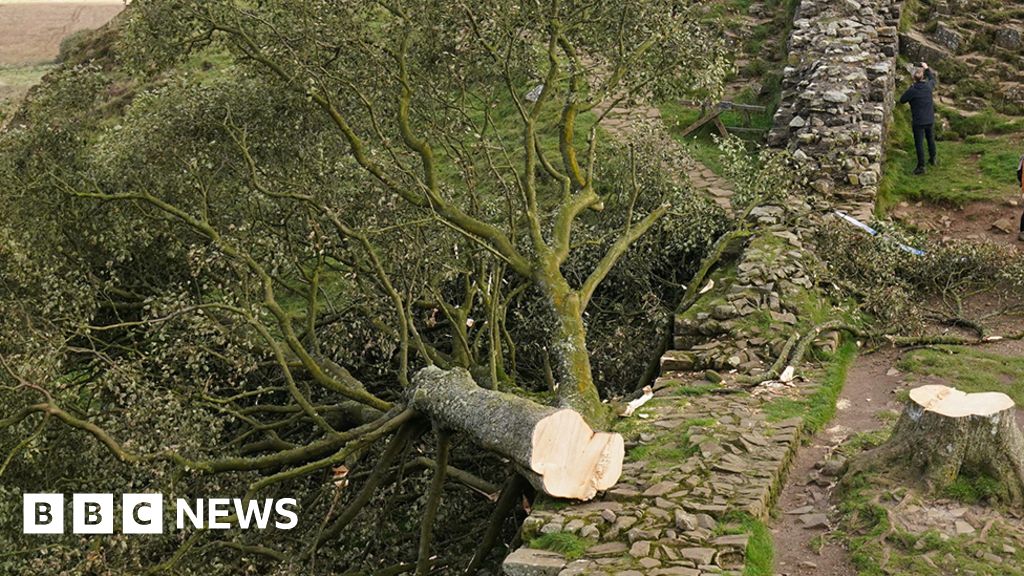
Daniel Graham, 38, and Adam Carruthers, 31, have been charged with causing criminal damage and damaging the 150-year-old Sycamore Gap tree on Hadrian's Wall in northern England, a UNESCO World Heritage Site. The tree, featured in Kevin Costner's 1991 film "Robin Hood: Prince Of Thieves," was a popular subject for landscape photographers and a significant landmark on the wall built in AD 122 by Emperor Hadrian. The nighttime felling sparked outrage, with police labeling it as deliberate vandalism.

The Sycamore Gap Tree or Robin Hood Tree was a sycamore tree standing next to Hadrian's Wall near Crag Lough in Northumberland, England. It was located in a dramatic dip in the landscape, which was created by glacial meltwater and was a popular photographic subject, described as one of the most photographed trees in the country and an emblem for the North East of England. It derived its alternative name from featuring in a prominent scene in the 1991 film Robin Hood: Prince of Thieves. The tree won the 2016 England Tree of the Year award. It was felled in the early morning of 28 September 2023 in what Northumbria Police described as "an act of vandalism". The felling of the tree led to an outpouring of anger and sadness.

This video can not be played New life has sprung from the rescued seeds and twigs of the Sycamore Gap tree mysteriously cut down last year. BBC News saw the new shoots on a rare visit to the secret National Trust centre protecting the seedlings. Read more here about tree-lovers' efforts to preserve its future and how they raced against time on the day it was felled. Watch: Seedlings from Sycamore Gap tree sprout up. Video, 00:00:30 Watch: Seedlings from Sycamore Gap tree sprout up Up Next.

Hadrian's Wall (Latin: Vallum Hadriani, also known as the Roman Wall, Picts' Wall, or Vallum Aelium in Latin) is a former defensive fortification of the Roman province of Britannia, begun in AD 122 in the reign of the Emperor Hadrian. Running from Wallsend on the River Tyne in the east to Bowness-on-Solway in the west of what is now northern England, it was a stone wall with large ditches in front of it and behind it that crossed the whole width of the island. Soldiers were garrisoned along the line of the wall in large forts, smaller milecastles, and intervening turrets. In addition to the wall's defensive military role, its gates may have been customs posts.Hadrian's Wall Path generally runs very close to the wall. Almost all of the standing masonry of the wall was removed in early modern times and used for local roads and farmhouses. None of it stands to its original height, but modern work has exposed much of the footings, and some segments display a few courses of modern masonry reconstruction. Many of the excavated forts on or near the wall are open to the public, and various nearby museums present its history. The largest Roman archaeological feature in Britain, it runs a total of 73 miles (117.5 kilometres) in northern England. Regarded as a British cultural icon, Hadrian's Wall is one of Britain's major ancient tourist attractions. It was designated as a UNESCO World Heritage Site in 1987. The turf-built Antonine Wall in what is now central Scotland, which briefly superseded Hadrian's Wall before being abandoned, was declared a World Heritage Site in 2008.Hadrian's Wall marked the boundary between Roman Britannia and unconquered Caledonia to the north. The wall lies entirely within England and has never formed the Anglo-Scottish border, though it is sometimes loosely or colloquially described as being such.

Illuminating Hadrian's Wall was a public event on Hadrian's Wall which took place on 13 March 2010 and saw the route of the wall lit with beacons. The event was organised by Hadrian's Wall Heritage Ltd. and coincided with the 1600th anniversary of the End of Roman rule in Britain.

Hadrian's Wall Path is a long-distance footpath in the north of England, which became the 15th National Trail in 2003. It runs for 84 miles (135 km), from Wallsend on the east coast of England to Bowness-on-Solway on the west coast. For most of its length it is close to the remains of Hadrian's Wall, the defensive wall built by the Romans on the northern border of their empire. This is now recognised as part of the "Frontiers of the Roman Empire" World Heritage Site.

James "Jimmy" Sheen, 39, pleaded guilty to burglary, transferring criminal property, and conspiracy in connection to the theft of a 4.8m 18-carat gold toilet from Blenheim Palace. The toilet, created by artist Maurizio Cattelan, went missing just two days after being installed at the Oxfordshire stately home during an art exhibition. Sheen, serving a 17-year sentence for other thefts, caused flooding and damage during the heist. Three other men are set to go on trial for charges related to the theft in February. Blenheim Palace, a UNESCO World Heritage Site, holds significance as the former home of the Churchill family and birthplace of Sir Winston Churchill.







''

https://www.theguardian.com/profile/robyn-vinter

ABC News

By BRIAN MELLEY

https://www.facebook.com/bbcnews

Sky News

Fox News

Wikipedia

PANORA

Wikipedia

Wikipedia

Wikipedia

PANORA